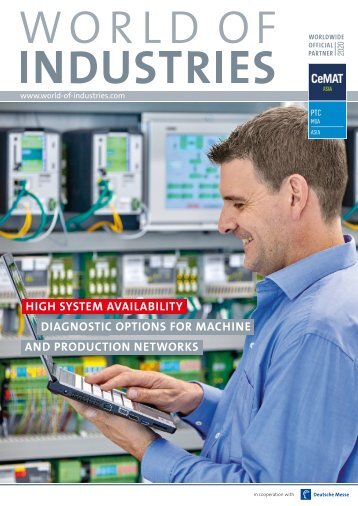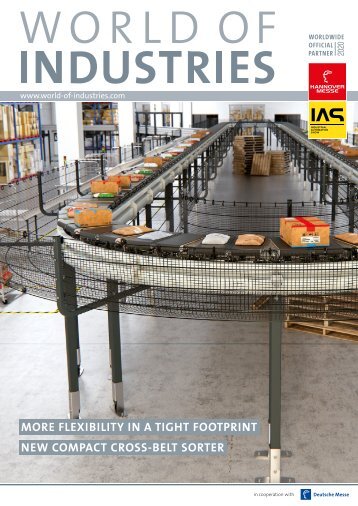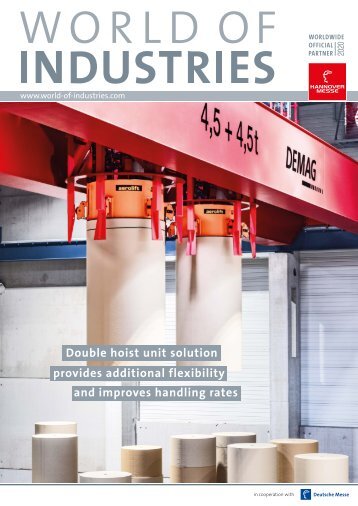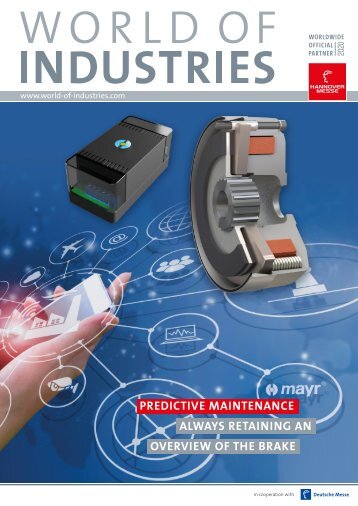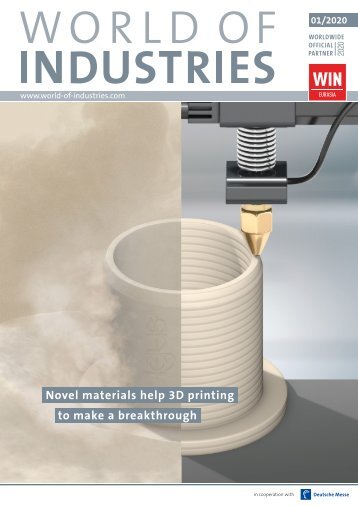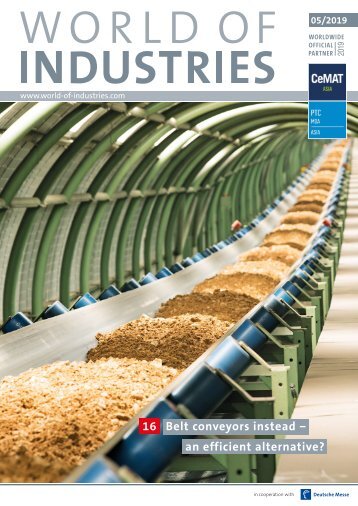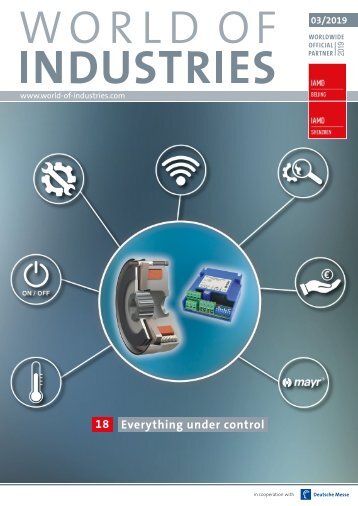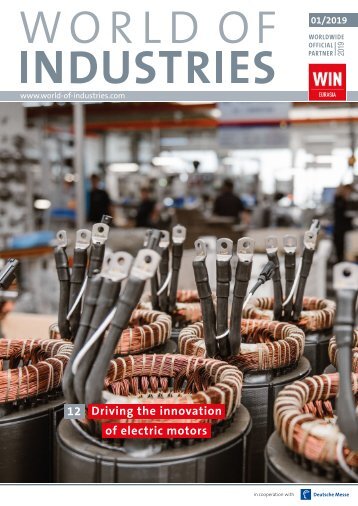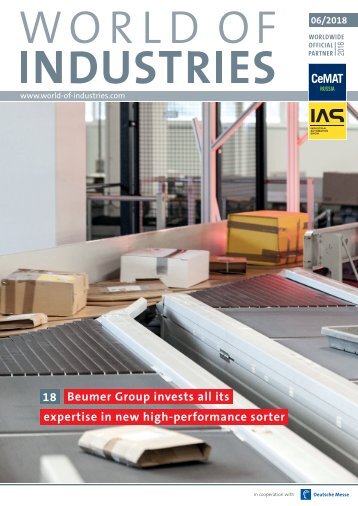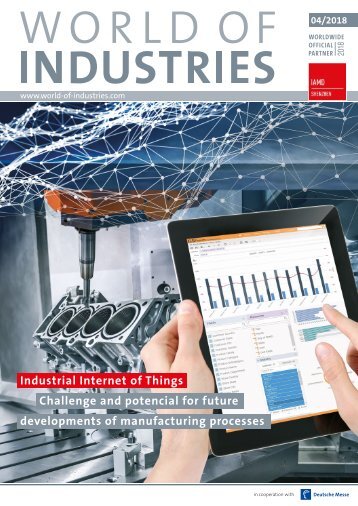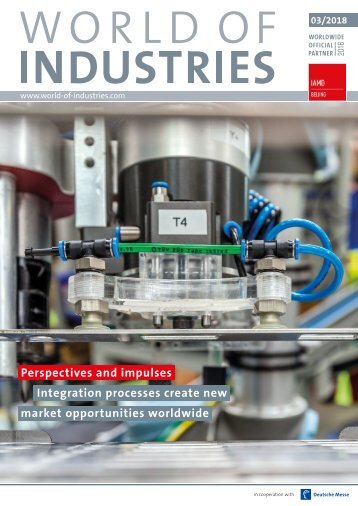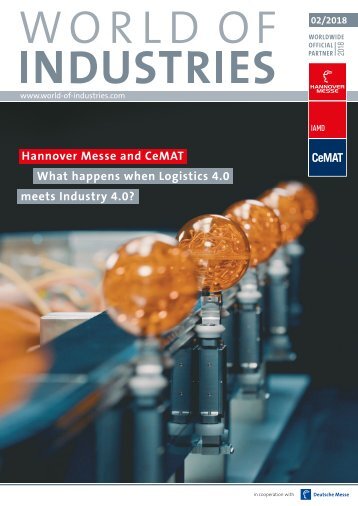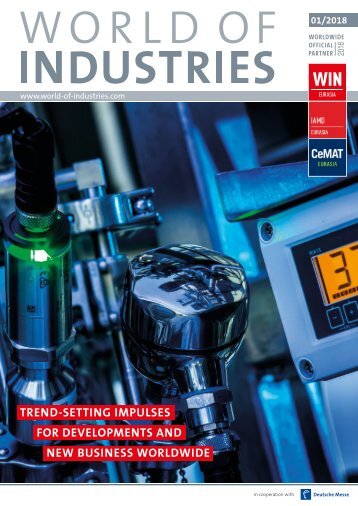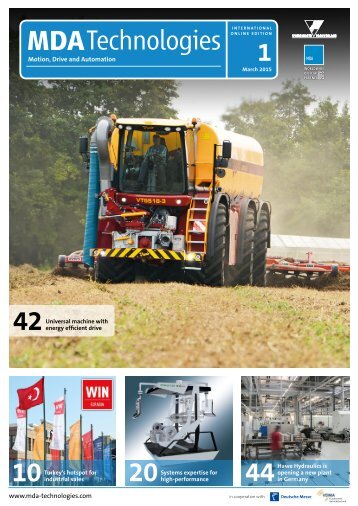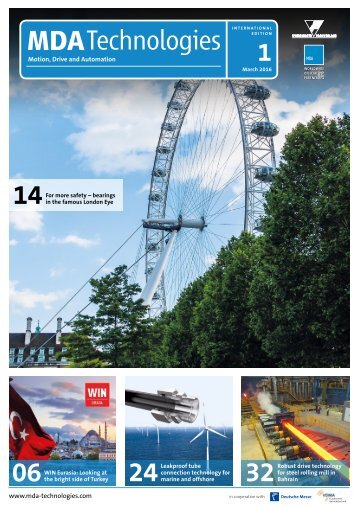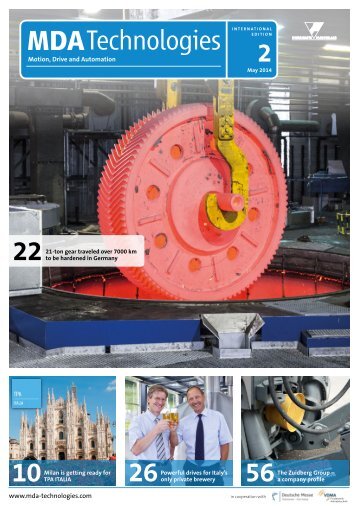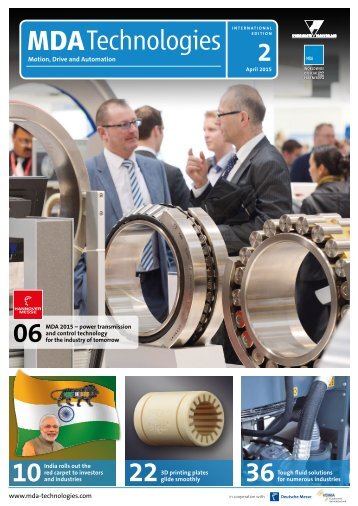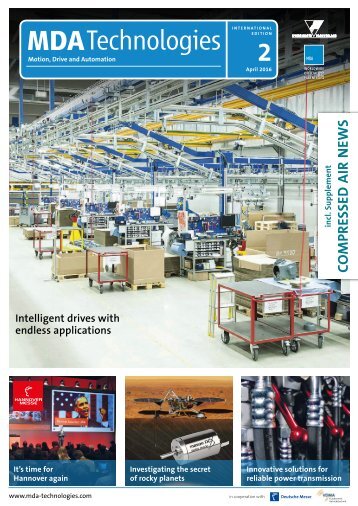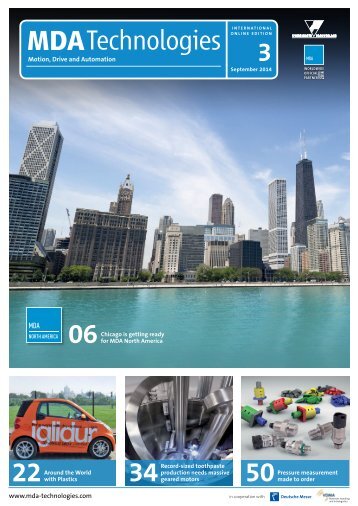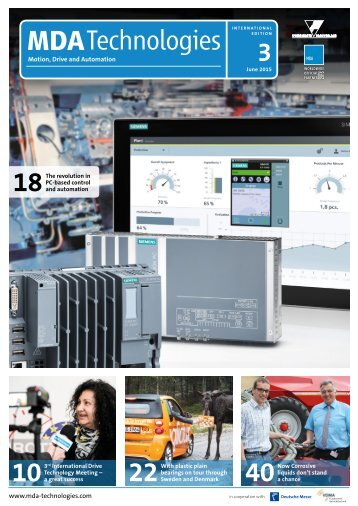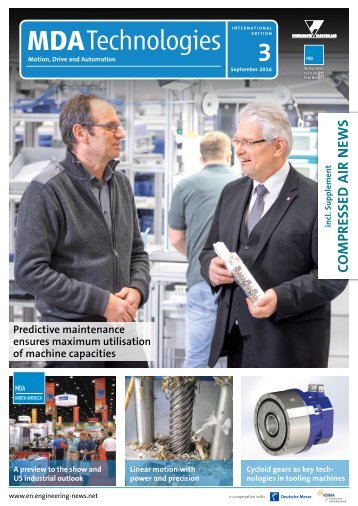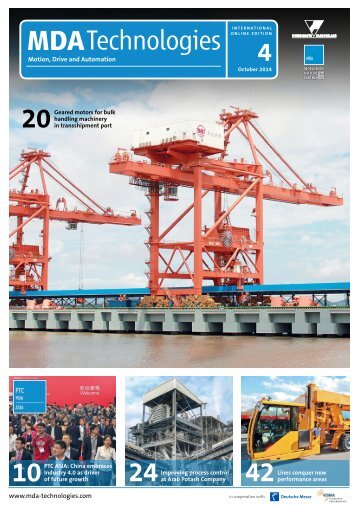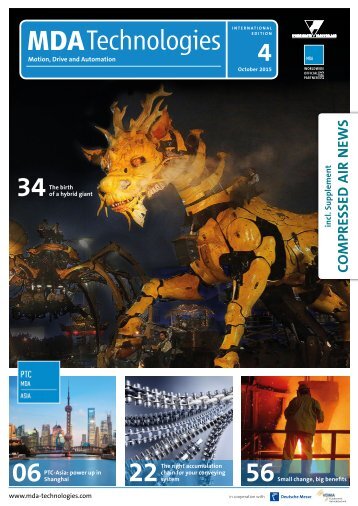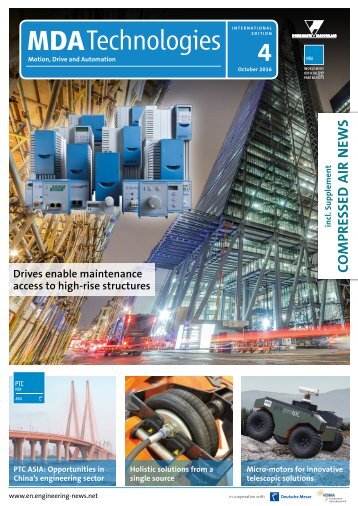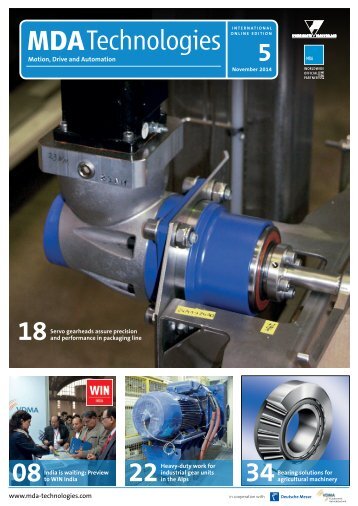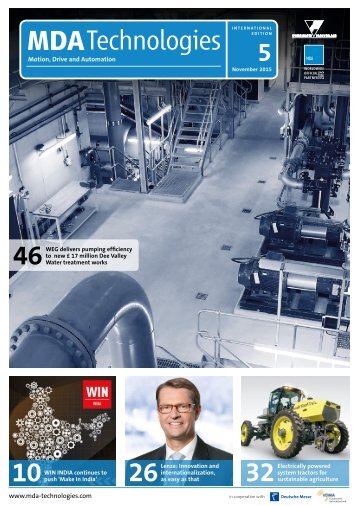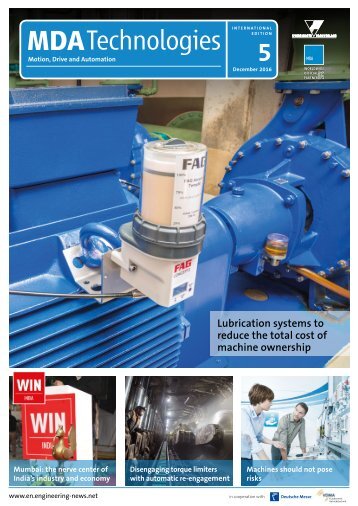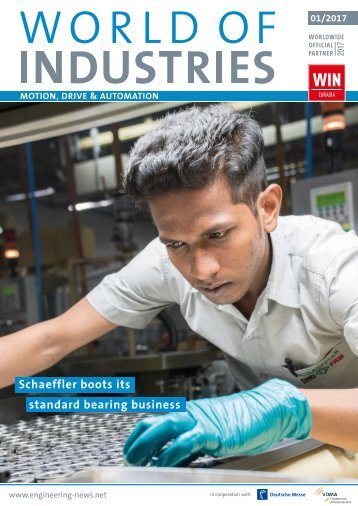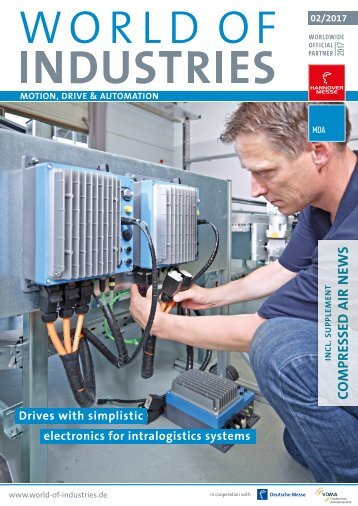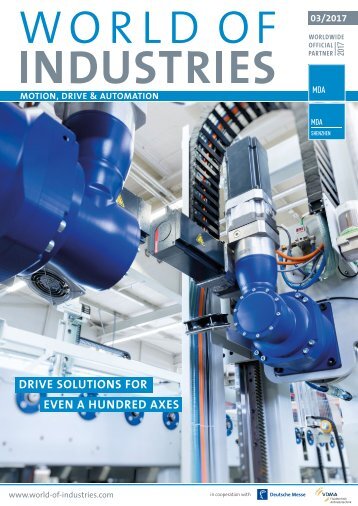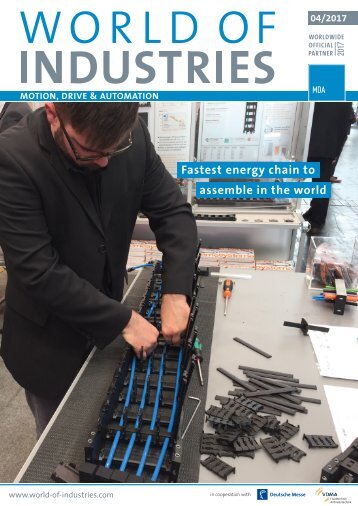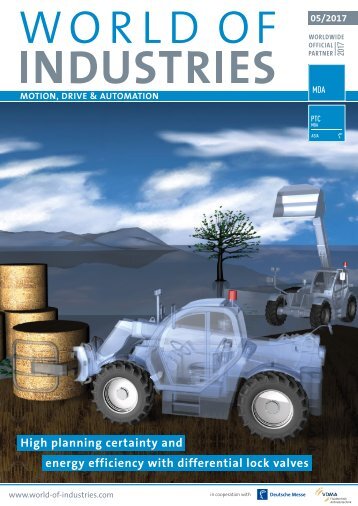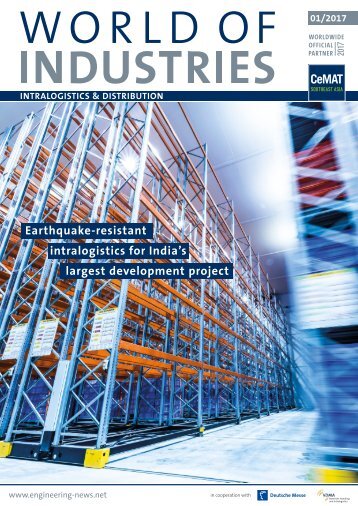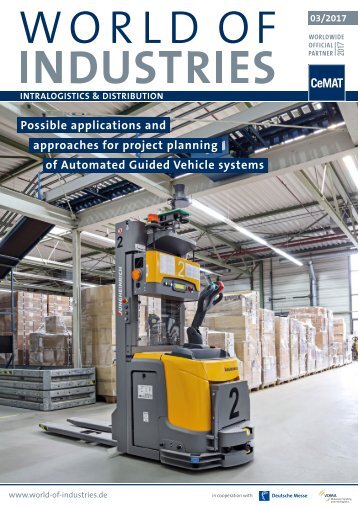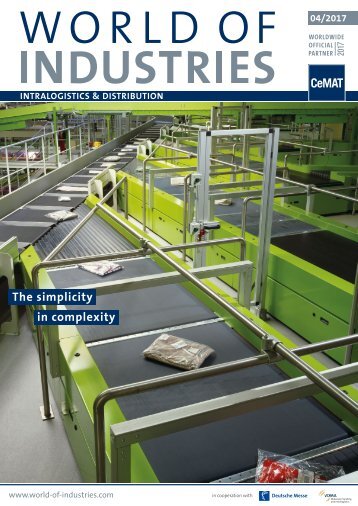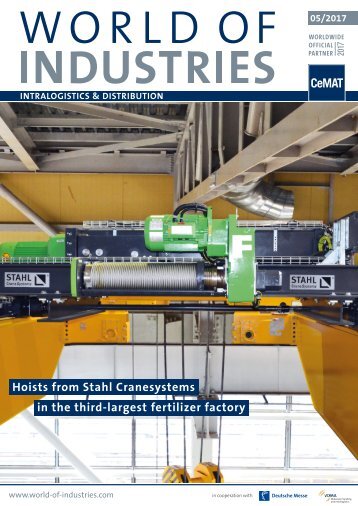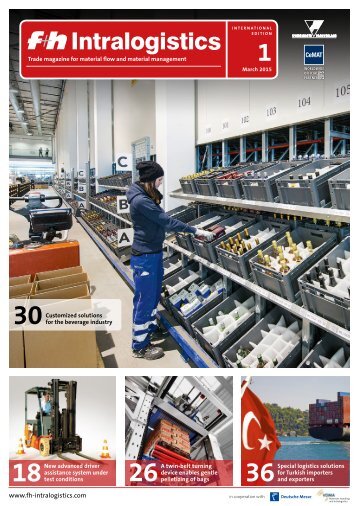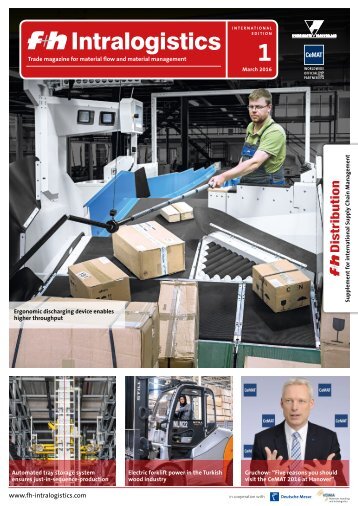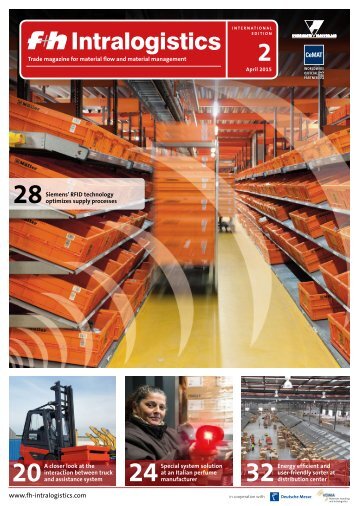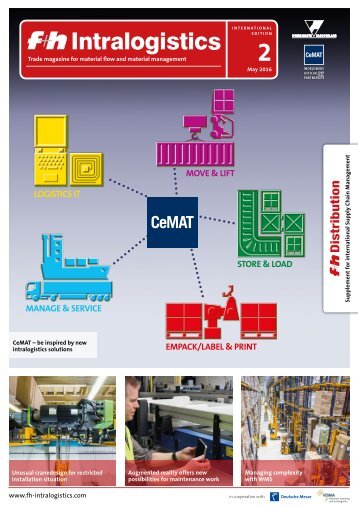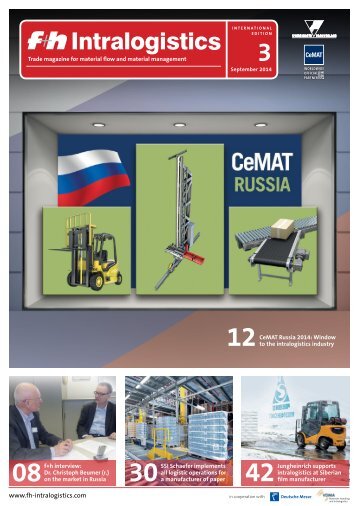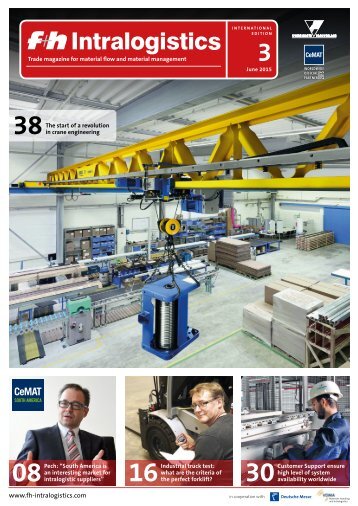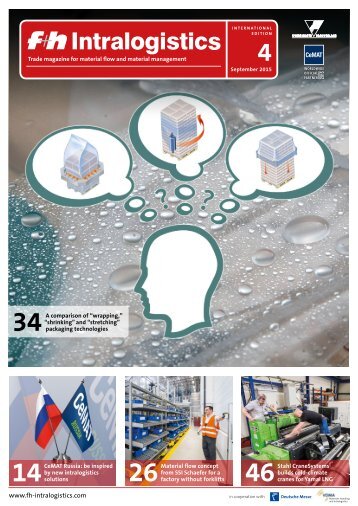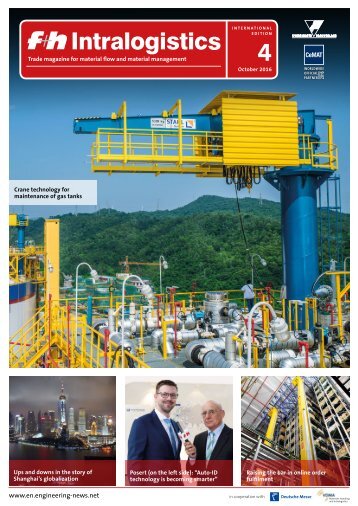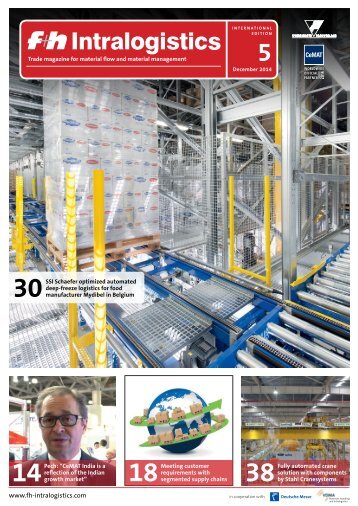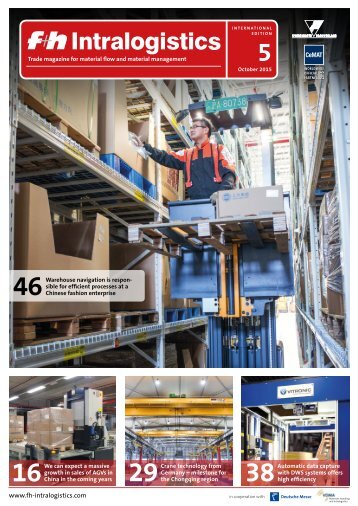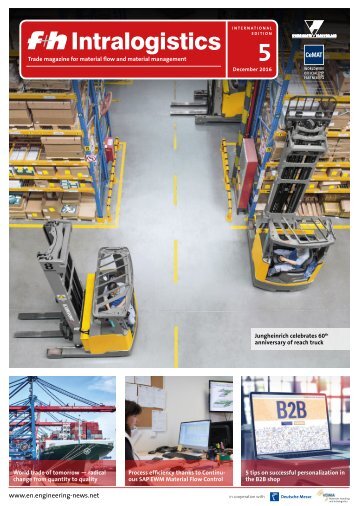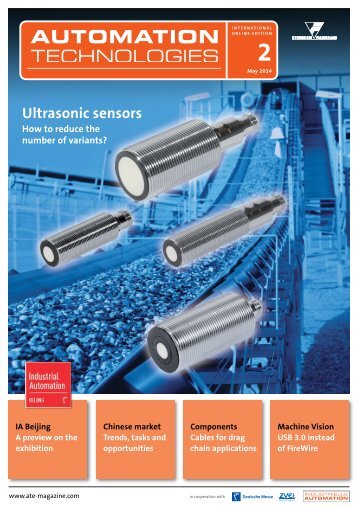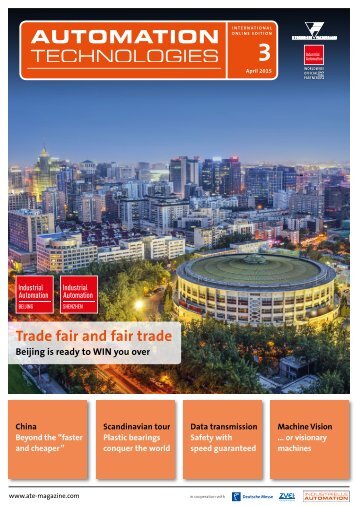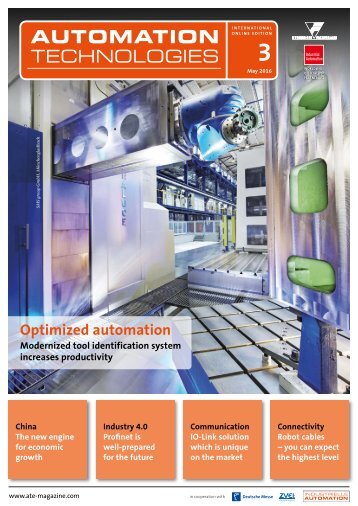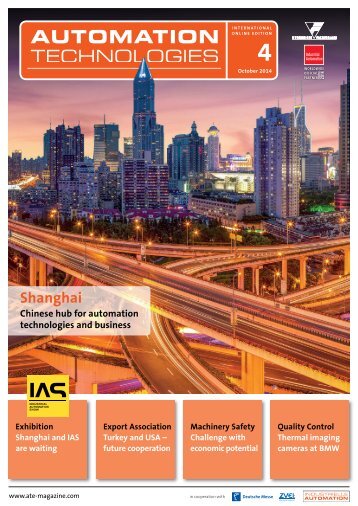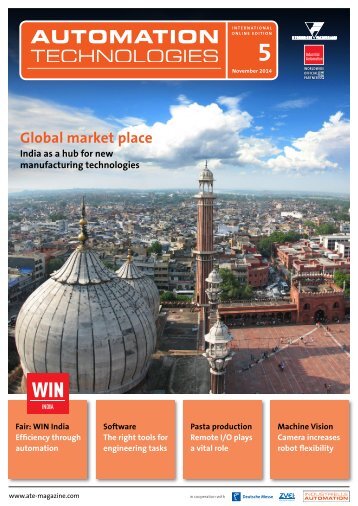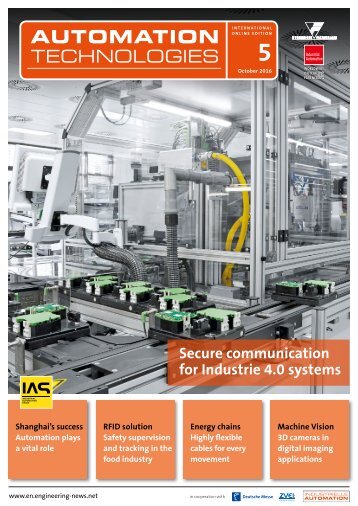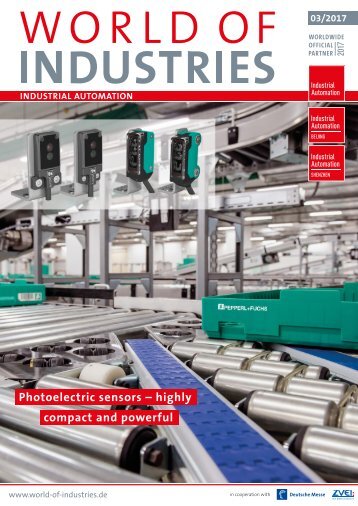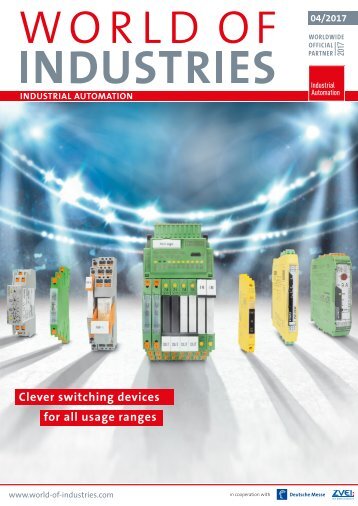Automation Technologies 5/2014
- Text
- Automation
- Technologies
Sensors and Measurement
Sensors and Measurement previous page 02 Electronic pressure switch with display (model PSD-30) (left); design of an electronic pressure switch, simplified (right) Strengths of mechanical and electronic switches Mechanical pressure switches have been proven over decades in countless applications and are indispensable within the machine-building industry. However, the rapid growth of electronic pressure switches stresses to everyone involved in the design of new systems and machinery that the critical question to be answered is whether to continue using mechanical switches or to integrate the machinery deeper into the supervisory control level. In order to find an appropriate solution for the individual application, the following key differentiators and specific strengths of the various switch technologies must be considered: n simple construction, cost-effective n no power supply required n direct and alternating currents can be switched n large switching currents can be switched without additional relays n simple mechanical switch point setting n electrical integration without analogue input cards – many PLCs offer pre-installed binary inputs n cost-effective solution for redundant safety functions The strengths of electronic switches are: n switch and reset points, switching outputs and switching functions can be set flexibly n switch point setting without calibration stand and pressurisation of the system n through local adjustability without demounting n almost unlimited number of switching cycles delete if required n no moving mechanical components n high reliability and long-term stability n shock and vibration resistant n high adjustment, switch point and repeatability accuracy Both mechanical and electronic pressure switches have numerous strengths in themselves, which enables a wide range of applications for both technologies. However, the choice for or against a mechanical or electronic pressure switch is quite simple. A suitable solution for any application While the pure function of switch point monitoring can be fulfilled equally by both technologies, nevertheless, mechanical pressure switches are primarily destined for simple safety applications. Particularly in applications where there is a safety function which is required very infrequently, mechanical pressure switches have an advantage, since they can open or close an electrical contact without a power supply (for example, in the monitoring of pumps and drives or when a system loses pressure). Last, but not least, price-sensitive applications such as simple hydraulic equipment, often still rely on mechanical pressure switches for simple control and monitoring functions. AUTOMATION TECHNOLOGIES 5/2014
Sensors and Measurement Electronic pressure switches offer unlimited flexibility Where mechanical products offer a very limited capacity for adaption, due to the maximum of one switching output and low control functionality, an electronic pressure switch is almost unlimited in the way it can be adapted to the respective application. From a “simple” factory-configured electronic OEM switch (with predefined switch and reset points, switch delay times and switching functions) which is primarily suited to high-volume applications, through to the flexibly adjustable pressure switch with keys and display for custom configuration to the machine, electronic pressure switches offer almost unlimited flexibility in their adaptability to the application. Applications that require reliability, accuracy and long-term stability make electronic switches indispensable. Whenever a machine tool must cut precision geometries with the smallest tolerances, or a cooling system must be controlled accurately for maximum energy efficiency, electronic switches are the first choice. Current trends While mechanical pressure switches are using a proven and mature technology, most of the product adjustments from the mechanical pressure switch producers focus primarily on the issue of quality and cost. Manufacturers of electronic pressure switches, however, rely on high rates of innovation and functionality enhancements. Electronic pressure switches featuring a display and buttons for adjustments were also introduced into the market many years ago and are still state- ofthe-art. Recent innovations, in particular, improve the usability of pressure switches, extend existing functionality and improve integration into the supervisory control level. Electronic pressure switches are based on the same design principle as a pressure transmitter. Thus, it stands to reason to combine the properties of a pressure switch and those of a pressure transmitter. In recent years, a variety of new products combine analogue output and switch output signals in one instrument as an electronic pressure switch – increasingly with an integrated display. The trend of continuously monitoring process parameters in parallel with safety functions and, additionally, a local display unit for installation and maintenance, all in a single instrument, has achieved rapid market penetration. The combination of up to three devices into a single electronic pressure switch leads to great savings in sourcing, installation costs and provision of the mechanical and electrical interfaces. Finally, but importantly, the IO-Link protocol for configuration, diagnostics and data query “downthe-wire” via the connection cable is a prime example of how electronic sensors and pressure switches are being developed to increase the user friendliness. Mechanical pressure switches, without a doubt, will maintain their right to exist in the future and will continue to maintain a high importance and share in the market, especially in cost-sensitive applications and with simple safety functions. Nevertheless, electronic pressure switches will continue to displace mechanical pressure switches from the market and will show a continued strong growth. www.wika.de About Company name: Wika Alexander Wiegand SE & Co. KG Headquarters: Klingenberg, Germany Turnover: 750 Mio. EUR (Wika Group) Employees: 7,900 (Wika Group) Products: pressure, temperature and level measurement, primary flow elements, calibration technology AUTOMATION TECHNOLOGIES 5/2014
- Page 1:
international ONLINE Edition 5 Nove
- Page 4 and 5:
COLOMBIA SLOVAKIA table of content
- Page 6 and 7:
News and Markets Enabling Indian ma
- Page 8 and 9:
News and Markets IST AG: 20 years i
- Page 10 and 11:
News and Markets European Imaging A
- Page 12 and 13:
News news and markets big our pictu
- Page 14 and 15:
AUTOMATION TECHNOLOGIES Ten-point-p
- Page 16 and 17:
AUTOMATION TECHNOLOGIES India is wa
- Page 18 and 19:
News and Markets What do you expect
- Page 20 and 21:
News and markets India goes Hanover
- Page 22 and 23:
news and markets UNTAPPED POTENTIAL
- Page 24 and 25:
AUTOMATION TECHNOLOGIES Find the so
- Page 26 and 27: AUTOMATION TECHNOLOGIES Quality con
- Page 28 and 29: AUTOMATION TECHNOLOGIES Quo vadis p
- Page 30 and 31: AUTOMATION TECHNOLOGIES Waste recyc
- Page 32 and 33: AUTOMATION TECHNOLOGIES Sensors for
- Page 34 and 35: AUTOMATION TECHNOLOGIES Shortened e
- Page 36 and 37: AUTOMATION TECHNOLOGIES Robot world
- Page 38 and 39: AUTOMATION TECHNOLOGIES I/O system
- Page 40 and 41: AUTOMATION TECHNOLOGIES Remote I/O
- Page 42 and 43: AUTOMATION TECHNOLOGIES Profinet is
- Page 44 and 45: AUTOMATION TECHNOLOGIES Quality che
- Page 46: Components and Software Separable c
- Page 49 and 50: ead article AUTOMATION TECHNOLOGIES
- Page 51 and 52: AUTOMATION TECHNOLOGIES video benef
- Page 53 and 54: video Syndy at work read article
- Page 55 and 56: AUTOMATION TECHNOLOGIES read articl
- Page 57 and 58: News and markets Compact and cost-e
- Page 59 and 60: Editorial Using international coope
- Page 61 and 62: news and markets this does not refe
- Page 63 and 64: WIN India: “A preview of Hannover
- Page 65 and 66: sensors and Measurement It can be h
- Page 67 and 68: sensors and Measurement next page 0
- Page 69 and 70: sensors and Measurement Make inform
- Page 71 and 72: Sensors and Measurement next page t
- Page 73 and 74: Reach international markets. New bu
- Page 75: Sensors and Measurement next page P
- Page 79 and 80: Sensors and Measurement 02 The ligh
- Page 81 and 82: Sensors and Measurement with an int
- Page 83 and 84: Control and drive technology next p
- Page 85 and 86: Control and drive technology Interv
- Page 87 and 88: Company name: Maxon Motor Establish
- Page 89 and 90: mined that the bag room facility sh
- Page 91 and 92: industrial communication next page
- Page 93 and 94: Get engineering news. Inspiration i
- Page 95 and 96: Industrial Communication next page
- Page 97 and 98: Get engineering news. Inspiration i
- Page 99 and 100: Industrial Communication Bürkert a
- Page 101 and 102: Components and software Company nam
- Page 103 and 104: Components and Software next page n
- Page 105 and 106: Components and Software high therma
- Page 107 and 108: Machine Vision On the wiring head a
- Page 109 and 110: Machine Vision next page with irreg
- Page 111: Reach international markets. New bu
Inappropriate
Loading...
Mail this publication
Loading...
Embed
Loading...

